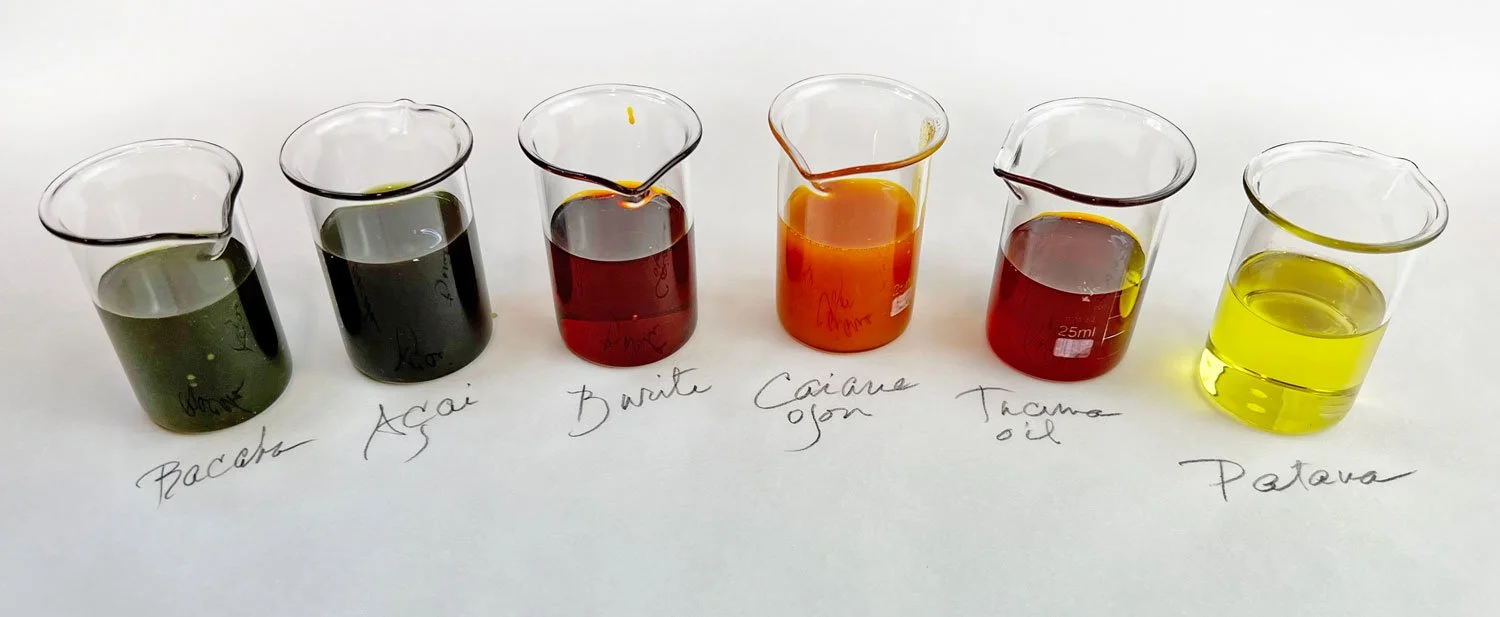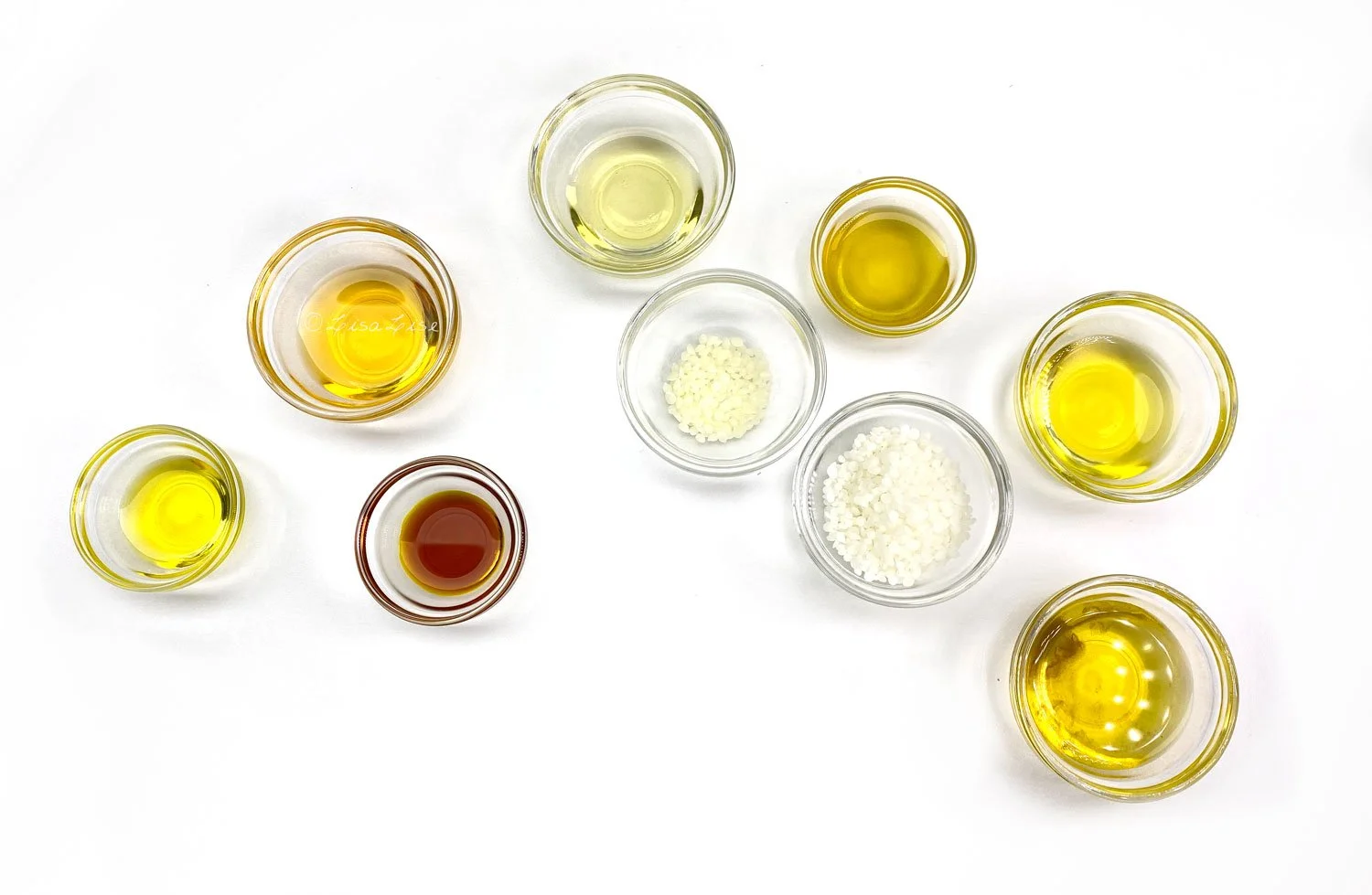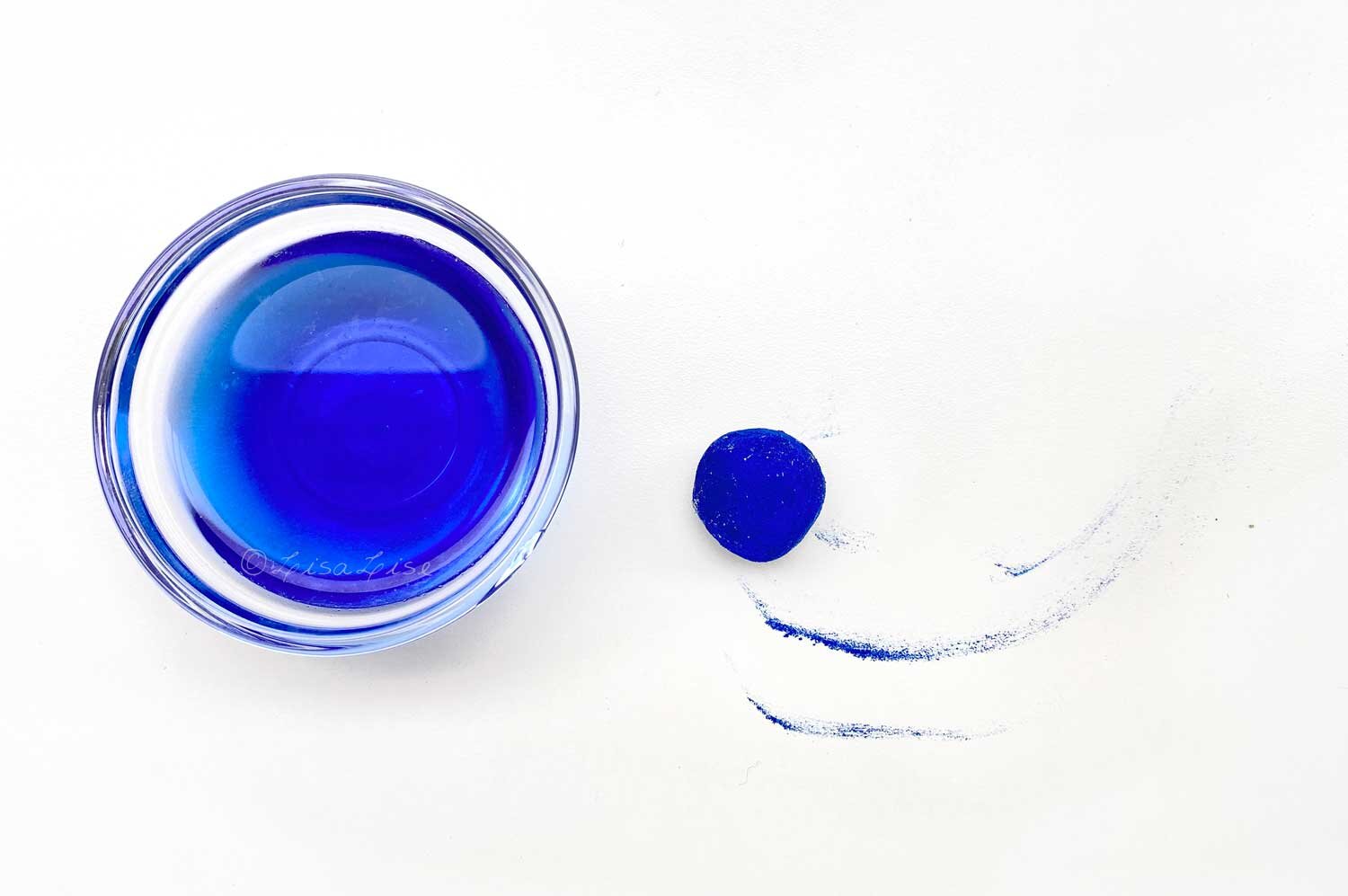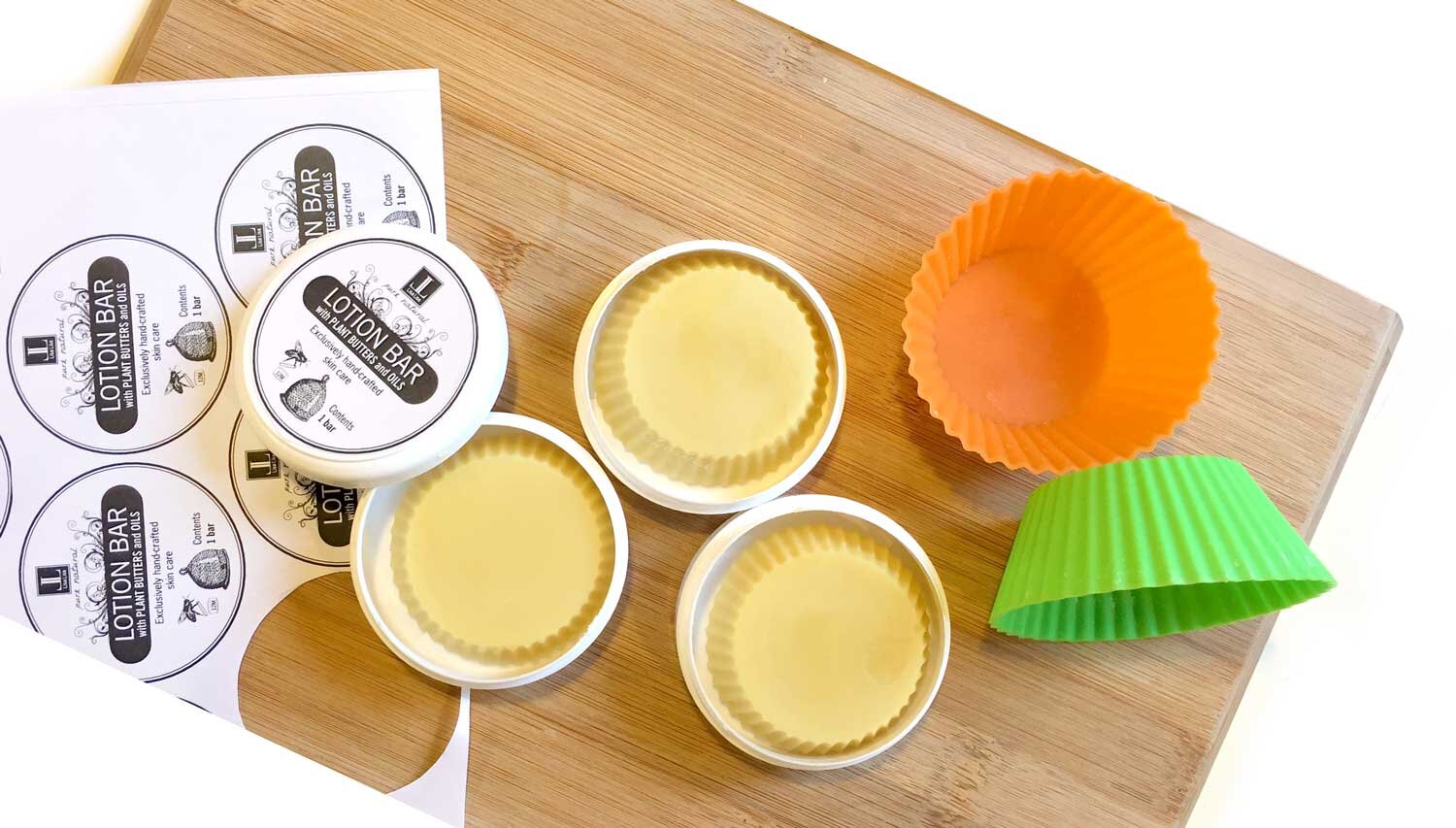Are Seed Oils Dangerous? An Interview with Susan M Parker
Lise
After seeing numerous posts/comments and memes on social media warning about seed oils as health hazardous, I contacted the one person I knew would be able to set the record straight about seed oils. I am absolutely thrilled that Susan M. Parker agreed to answer my questions and be interviewed here on the blog.
Susan is author of Power of the Seed (the Bible of any cosmetic formulator interested in understanding carrier/fatty oils) and the Founder of the Lipid Oils Academy (links below). I regard her as The Lipid Trailblazer – apart from being incredibly knowledgable about all things lipid, she is an all around lovely lady.
Please join me in welcoming Susan M Parker to the blog.
Welcome to the blog, Susan! You are known as the primary source of information about vegetable and plant oils in the beauty industry (and probably beyond). How did you learn about the properties of carrier oils?
It is funny that I am known as the primary source! I only arrived at this point as I needed help finding enough information on the oils that made sense to me. I started an herbal products business after my herbal apprenticeship, where making herbal infused oils was magical.
Herbal infusions led to balms and salves, soap, then I branched out into facial care - and I kept pottering away and bought books on essential oils and herbalism but there were no books or websites to understand the carrier-type oils.
I had a chemist friend who gave me some pointers about fatty acids in making soap, which led to a self-published booklet that was the infancy of Power of the seed. This was in 2000 and 2001. The title only came later from my publisher when the "real" book was in the works in 2014.
When I got the go-ahead for the book proper, I dove in to try as many oils as I could - this was where I discovered that applying oils to wet skin in the shower or bath could tell you a whole lot about the nature of the oil. I still recommend this to my students to learn about the oils intimately on the skin. Not just by fatty acid pie charts.
So the book came out in 2015, which was a long time ago. Once I started working with Olivia to put courses online, the research kept expanding. And every time I rewrote the Lipids Decoded course, I learned more and wanted to include it, so my knowledge base kept growing too.
And I have just rewritten the course and reformatted it again 2022. Believe it or not, new information about oils - primarily within botanical families - appeared, so I got all excited again. The botanical families of lipid oils are fascinating because big themes jump out when you put oils from a family group together with pie charts and color photos.
Like in the Rose family - almond, apricot, apple, pear, raspberry, rose hip - a few of the 14 oils fall within four different fatty acid groups! Trees and shrubs are different growing shapes, but the fatty acid groups grew from two to four over about three years as new oils appeared and staked their part of the family.
The other family that is so much fun now is the palm family - even with all the issues with using palm oil as a social problem. I have had people want to string me up if I mention "palm oil," but there are 14 of them, too, from 12 different trees, and only one is the problem because of who and how it is grown. —- But going past all that, I have recently found two distinct fatty acid profiles in the family, and each group is very different from a color point of view. One is all red and green oils, while the other is white, tan, and cream colors.
I could only have seen that by rewiring the course and laying out the material in a new way with new photos. I have an art background so laying out the courses helps that part of my brain. I have no real science except what a few friends have helped me with, so it is kind of crazy that I am the primary source, as you say. I get interested and dive down rabbit holes, and that is where the discovery happens.
Whew!
Is there a difference between oils produced for skincare and for consumption? If so, what should people be aware of?
The oils for skin care and eating are pretty much the same, but there are things to watch out for - not that there is any harm, but most cooking oils are more highly refined than those for natural skin care. That said, I am seeing more natural unrefined cooking oils - avocado is one. Big bottles for cooking are usually mostly clear with little color, so refined, but I do have a few that are very green and unrefined - so lots of unsaponifiable goodies in them.
The other thing to watch out for is toasted oils - sesame oil is the one most people encounter, but lots of oils are toasted for flavor, which is just too strong a scent for most skin care. Not harmful, but strongly scented of dinner might differ from what formulators are looking for.
There are currently many rumors circulating about 'seed oils’ being bad for your health. Could you shed some light on this?
Yes, the rumors circulating are about PUFA (PolyUnsaturated Fatty Acid), seed oils, omega-6. People are completely misreading the nature of these oils.
And there is an issue with internal consumption versus topical application on the skin.
Internally, omega-6 oils are mostly from seeds, and omega-6 is a polyunsaturated fatty acid (PUFA), so they are the same thing. This is linoleic acid, and it is one of two essential fatty acids. Both of these fatty acids need to be consumed in relative proportion because they work in tandem with the body. Omega-6 linoleic acid promotes inflammation that we need to heal when we are sick or injured. Omega 3- its counterpart, a-Linolenic acid, checks that inflammation keeps the body in balance.
Most of our modern diets skew towards omega-6 rather than omega-3 because of food processing and agriculture because omega-3 fatty acids are more highly susceptible to oxidation than omega-6. Common ratios of O-6 to O-3 are 30 or more to 1. To be in balance, it should be more like 3 or 4 to 1.
So needing to understand the dual nature of both EFA essential fatty acids in the problem - not omega-6.
And don't get me started on "seed oils" are bad for you - All plant oils are from some sort of seed, and we call them kernels, grains, beans, or pulps, but they are still the reproductive part of the plant - the seed.
So what is it that people are misunderstanding about seed oils? How could they possibly be bad for health?
The seed oils reference the omega-6 or PUFA oils - they all fall into the same group - usually high in polyunsaturated linoleic acid. And these oils can also be commodity oils - soybean, sunflower, cotton seed, and others, and the argument is that they are "full of toxic" compounds. This is a valid point if not grown using organic practices and use a lot of synthetic fertilizers and pesticides. But there are many wholesome oils to use, olive, coconut, avocado, ghee, peanut, and even red palm, where you get the benefit of a strong dose of carotenoids which are pro-vitamin A.
The quality of the oils does matter. And who is growing and processing it matters a lot. So these commodity oils can be of lesser quality. Still, then if, in addition, the omega-6 fatty acids are consumed in too great a ratio to the omega-3 I mentioned above, we get out of balance, and then our health can be pro-inflammatory rather than in balance. These oils are often made into margarine and shortening to extend their shelf life, but these are very bad for our health as recent studies show.
But when they use the term seed, they don't realize that all oils are from some aspect of seeds. Olives are seeds; we just don't call them that, avocados too, and all the rest.
I hope this will allay fears!
What about rancidity? There seems to be discussion about the dangers of oxidated oils as well.
Some people are afraid that oils applied in the morning will go rancid by tea time! This isn’t true unless you live in a hot oven, in which case we wouldn't make it to tea time!
It takes several hours at 110℃, which is 230℉, for rosehip seed oil to oxidize. For apricot and avocado, it takes 10 hours at those temperatures, so the idea that oils can go rancid in a day is not reasonable.
People hear "rancid" and "oxidize" and figure it happens fast, and they get scared without thinking about the process.
Thank you Susan for giving us your insight into the world of lipid oils!
“Applying oils to wet skin in the shower or bath can tell you a whole lot about the nature of an oil. I recommend this to all my students to learn about the oil intimately on the skin and not just by reading fatty acid pie charts.”























